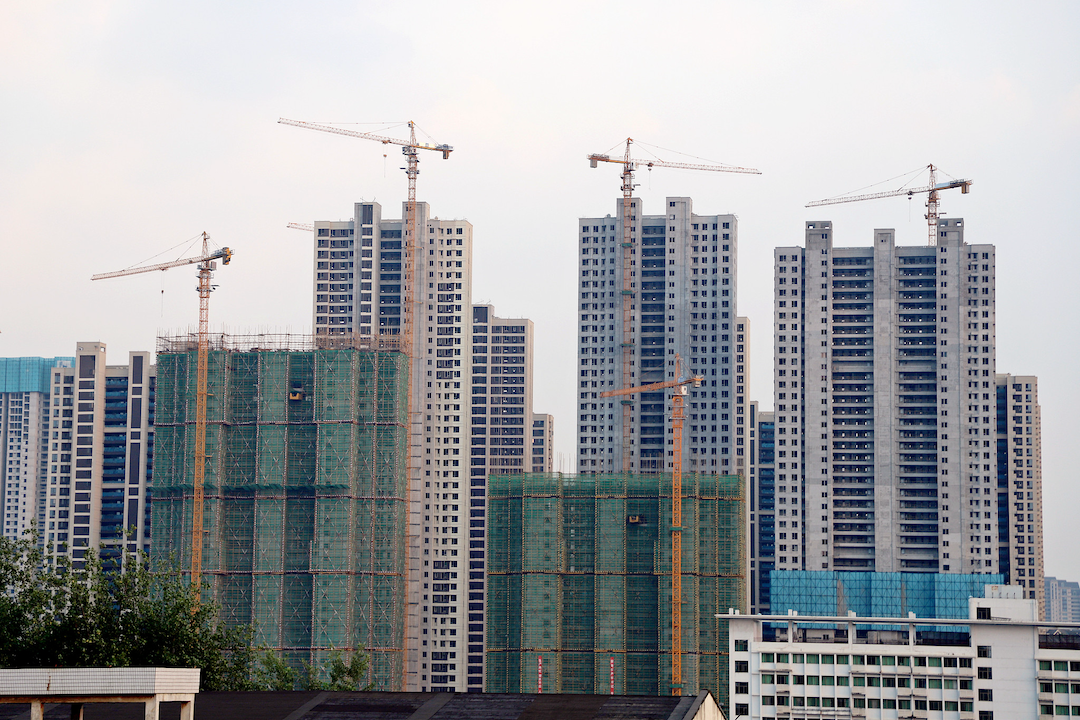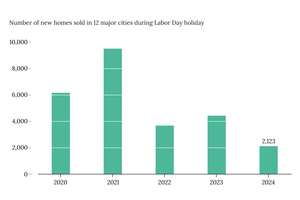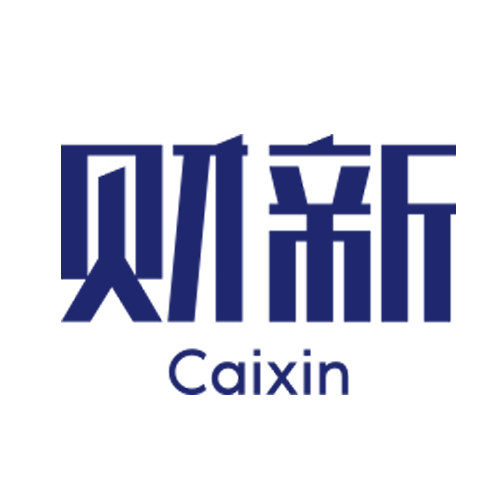Caixin Explains: What’s in China’s Policy Toolbox to Tackle the Ballooning Housing Stocks
Listen to the full version

Record high housing inventories are accumulating across China as the country’s property market grapples with chronically slowing sales and falling prices, complicating regulators’ efforts to rejuvenate the sector.
Despite a wide range of policies to spur sales, the area of unsold homes has reached 748 million square meters as of March, a record according to China’s National Bureau of Statistics (NBS).

Download our app to receive breaking news alerts and read the news on the go.
Get our weekly free Must-Read newsletter.
- DIGEST HUB
- China's property market faces record-high unsold housing inventory of 748 million square meters, complicating regulatory efforts.
- Policies like "trade-in" programs and government purchases aim to reduce stock, but challenges remain in smaller cities with severe oversupply.
- Policymakers are considering a national real estate investment vehicle to manage the crisis, needing substantial funding between 9 trillion and 30 trillion yuan.
China is grappling with a severe property market crisis, characterized by record-high housing inventories and declining sales and prices. As of March, unsold homes spanned 748 million square meters, the highest ever recorded by the National Bureau of Statistics [para. 1][para. 2]. This enormous stockpile is exacerbating liquidity issues for developers, prompting the government to urgently address the problem [para. 3][para. 4].
In April, the Politburo highlighted the inventory issue and indicated measures such as “trade-in” programs and converting unfinished buildings into affordable housing to stimulate sales [para. 4][para. 5]. Policymakers might also create a national real estate investment vehicle to buy and revitalize unfinished properties [para. 6]. This situation mirrors a previous slowdown in 2016 when government policies successfully reduced inventories from 739 million square meters in February 2016 to 492 million square meters by November 2019 [para. 7].
Despite more than 70 central and 300 local government measures to counter the downturn in early 2023, the slump persists [para. 8][para. 9]. The government is expected to introduce further measures that could potentially have historic impacts on the industry [para. 10]. However, challenging market conditions make this difficult [para. 11].
As of March, the inventory absorption period in China’s top 100 cities stood at 25.3 months, more than double the historical range of 12-14 months. For 41 cities, it exceeded 36 months, with cities like Shaoguan in Guangdong needing up to 12 years to sell existing homes [para. 12][para. 13]. Additionally, home sales have significantly declined, with the top 100 property companies seeing a 45% year-on-year drop in new-home sales in April [para. 14].
To tackle the issue, the Ministry of Natural Resources (MNR) urged local authorities to limit land sales for new residential development. Despite a 30% decrease in the number of cities planning to add land supply in 2023, planned sales still seem excessive [para. 15]. Cities have also eased home purchase restrictions and introduced state-led acquisitions and "trade-in" programs to encourage sales and conversions to subsidized housing [para. 16][para. 18].
The “trade-in” program encourages homeowners to sell and upgrade their homes, but its success hinges on whether the old houses can be sold, a challenge in smaller cities with a severe oversupply of new homes [para. 19][para. 20]. Another strategy involves government-led purchases to build reserves for subsidized housing, supported by a 100 billion yuan pilot loan program initiated by the People’s Bank of China in January 2023 [para. 21]. However, funding these state-led purchases is a major concern given the fiscal pressures on local authorities [para. 24].
The industry is also looking to the central government for more substantial intervention. Proposals for a national real estate investment vehicle to acquire and revitalize unfinished properties signal this shift, though this requires extensive funding and poses numerous challenges, including acquisition management and moral hazards [para. 26][para. 30].
In summary, China’s property market faces a complex and severe crisis of high inventories and declining sales. While the government has implemented numerous measures and is considering more to stabilize the situation, significant challenges remain, particularly concerning funding and market absorption capacities.
- Morgan Stanley
- Morgan Stanley noted during a May 5 investor presentation that the Chinese government's efforts to address housing inventory issues indicate they are exploring ways to destock the property market. These efforts include "trade-in" programs to stimulate house sales and government purchases to convert unfinished buildings into affordable housing.
- Guotai Junan Securities
- Guotai Junan Securities estimates that a national real estate investment vehicle would need between 9 trillion yuan and 30 trillion yuan to acquire 4.2 billion square meters of properties awaiting sale by the end of 2023, within a timeframe of 1.5 to 3 years.
- Centaline Property
- Centaline Property, represented by Liu Yuan, head of property research, expressed concerns about state-led housing purchases due to the large funding required and the potential problem of properties remaining vacant after government acquisition. Liu highlighted the funding difficulties local authorities face and warned that if these properties can't attract buyers, the inventory problem won't be truly resolved.
- Huatai Securities
- Huatai Securities is mentioned in the context of the housing "trade-in" program. Nearly 40 cities, including Shenzhen and Shanghai, have issued property trade-in policies, according to Zhang Jiqiang, an analyst at Huatai Securities. This program aims to encourage homeowners to sell their current homes and upgrade to new ones, offering subsidies or involving state-owned enterprises to facilitate transactions.
- China Real Estate Information Corp. (CRIC)
- China Real Estate Information Corp. (CRIC) reported a significant drop in the value of new-home sales from China's 100 biggest property companies. In April, sales decreased by 45% year-on-year to 312.2 billion yuan ($43.2 billion) and saw a 46% decline in March. Transactions also fell by 13% from March.
- E-House China
- E-House China Research and Development Institution reports that the inventory absorption period for new residential properties in China's top 100 cities was 25.3 months as of March. This exceeds the historical range of 12 to 14 months, indicating it will take over two years to clear the stock of new homes. Additionally, E-House estimates that cities like Shaoguan and Xining will need several years to sell their existing homes.
- Zhengzhou Urban Development Group Co. Ltd.
- Zhengzhou Urban Development Group Co. Ltd. is a state-owned company assigned by the city government of Zhengzhou to facilitate the "trade-in" program. It aims to purchase 5,000 units of old residences and assist homeowners in buying new homes. The initiative is part of Zhengzhou's broader plan to complete 10,000 property trade-ins of pre-owned homes by the end of 2024 and establish a city-wide housing information platform.
- China Development Bank
- The China Development Bank has supported the government's efforts to manage housing inventories by providing loans. As part of a pilot loan program initiated in January 2023, the bank allocated 100 billion yuan to aid local authorities or state-owned enterprises in bulk purchasing existing homes to increase rental housing supply. Additionally, it provided 4 billion yuan in loans to four cities for purchasing properties designated for affordable rental housing.
- GALLERY
- PODCAST
- MOST POPULAR







 Sign in with Google
Sign in with Google
 Sign in with Facebook
Sign in with Facebook
 Sign in with 财新
Sign in with 财新